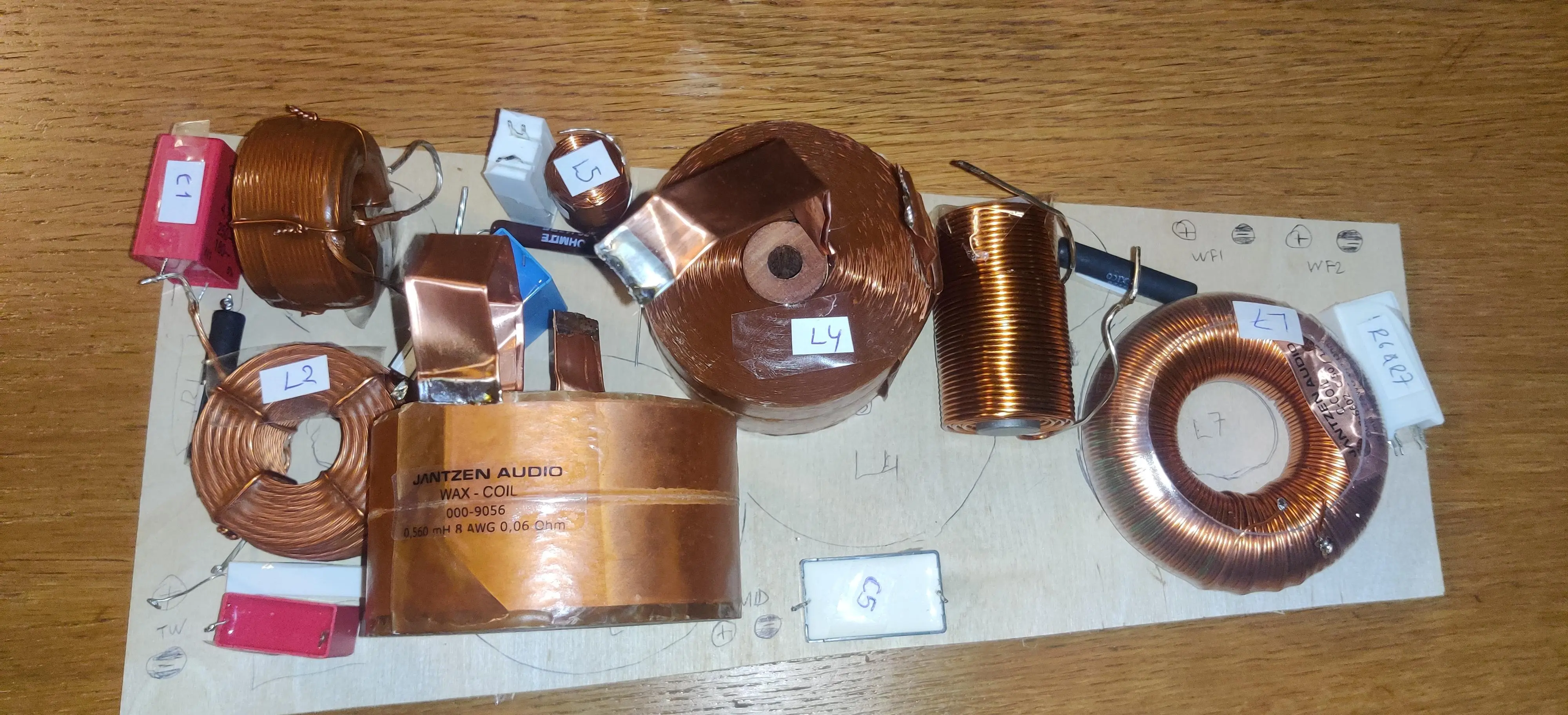Yeah but could Leonardo DiCaprio fit on it?
DIY
A place to discuss DIY audio, share plans and schematics, and link to interesting projects.
Probably, if it was a mini-version
It looks like L5 and L4 have the same orientation. I would change one of them, inductors near each other should be on a different planes.
Punch holes in your mounting board and stick the leads of each component through. It is much easier to twist and solder that way, none of the components will interfere.
Also consider moving the tweeter crossover to its own board, so that you can mount it high up in the cabinet. Makes for a cleaner and easier working environment.
Damn, those Jantzen foil caps cost a fortune at that size. There's so much copper on that board that three different methheads have tried to steal OP's post.
Is this for a 3 or 4-way speaker? As others mentioned, you can break the board into more than one piece by driver. You know which components are for which driver by the outputs, but also generally, there should be segments of the individual networks with one pair of wires from the up / downstream network in and one pair out to a driver.
Since you know where the connections and components connect to each other, you can untangle networks and spread / split the board with some alligator wires to visualize it better. Get some of these: https://www.amazon.com/WGGE-WG-026-Pieces-Colors-Alligator/dp/B06XX25HFX/ and start stretching things across a table. Color coding helps. Use a single wire of a specific color to symbolize each of the drivers and input rails. Also the boots are removeable / swappable and take well to sharpies, so you can mark polarity.
